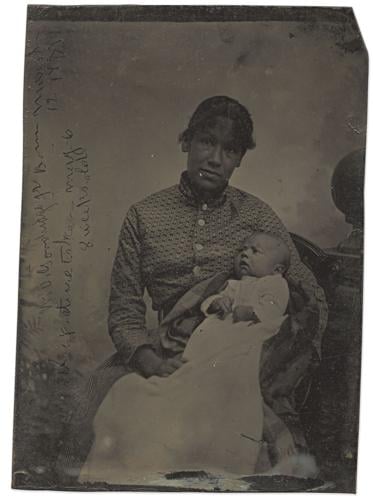In this series, Lagniappe presents a different work each week from the collection of the New Orleans Museum of Art, with commentary from a curator.
In 1829, Glenalvin J. Goodridge (1829-1867) was born into a family that counted itself part of a growing population of free Black people in York, Pennsylvania. Goodridge opened his first daguerreotype studio in 1847. In the late 1850s, Goodridge was joined in the business by his brothers William O. (1846-1890) and Wallace L. Goodridge (1840-1922).
This tintype portrait of Gertrude Watson Goodridge holding her son William O. Goodridge Jr. constitutes a remarkable record of a family of photographers, and a unique example of photographic authorship.
Tintypes use no negative to print from, but rather an image is fixed directly onto a printing surface. One of the first mass-produced photographic formats, tintypes are now largely anonymous, as there was often no place to record a maker or sitter’s name.
In this case however, William Goodridge, presumably, exercised some privilege as a photographer, by scratching a caption into the surface of this portrait before the emulsion dried.
This photo reads: “W.O. Goodridge, Jr., born March 12, 1883, first picture taken May 6, 8 weeks old.” We know, then, that on top of being a tender portrait of mother and child, this is a record of William Jr.’s first time in front of a camera, and illustrates a significant moment in the photographic life of William Sr. — taking a picture of his newborn son for the first time.
This photograph is on view at NOMA as part of "Called to the Camera: Black American Studio Photographers" until Jan. 8.


